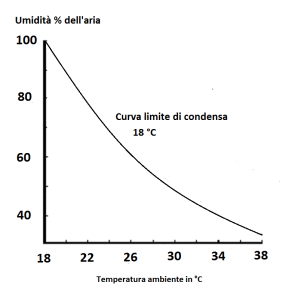- 4/2/15
- 1,235
- 7
- 0
Per comodità , riporto anche qui una guida completa e comprensibile su come va letto un Time-Graph, già presente su questo forum nella sezione generale, e che a suo tempo avevo trovato su RWG.
Presets
Beat Number
Frequency, the vibration of a movement. The number of balance wheel swings per hour or how many times the watch ticks per hour. This is a preset, depends on the watch you order.
14,400 bph = 4 beats per second
18,000 bph = 5 beats per second
21,600 bph = 6 beats per second
28,800 bph = 8 beats per second
etc
Lift Angle
The angle the balance passes through while interacting with the pallet fork. Important to be set correctly in order to calculate the Amplitude. This preset is per caliber specs.
Most modern watches have a lift angle of 50 - 52 degrees. Generally lift angles range from 44 to 58 degrees. Some other settings are present, for instance Gen co-axials angle is 30 degrees.
Results
Rate
How fast / slow the movement runs (in seconds per day)
great : +/- 5 s/d
acceptable : +/- 12 s/d
If higher / lower?
It is possible to adjust this yourself or ask your dealer to nudge it a bit.
Amplitude
The measure of the amount of rotation in the swing of the balance wheel, in either direction.
Amplitude is higher when a watch is lying flat and usually falls when the watch is in a vertical position, due to increased friction. Amplitude can also fall as the watch winds down and the mainspring delivers less power.
Amplitude is a good indicator of the movements health and if is too high or too low, or that changes too much in different positions, can indicate a problem with the movement.
great : 270-310
acceptable : 250-270
If higher / lower?
Ask for a different watch or have your watch serviced
Beat Error
The amount of time by which the duration of swing differs from one side to the other in the oscillation of a balance wheel. Generally speaking to get a beat error of zero, the roller jewel in the pallet fork must be perfectly centered.
great : 0.0-0.5 ms
acceptable : 0.6-1 ms
If higher?
Ask for a different watch or have your watch serviced.
* Please note that if you are reading your QC from the dealer, you will generally receive only the results of the watch lying flat. All the above recommended measurements are from that position. The measurements in other positions may vary
(from RWG)
Presets
Beat Number
Frequency, the vibration of a movement. The number of balance wheel swings per hour or how many times the watch ticks per hour. This is a preset, depends on the watch you order.
14,400 bph = 4 beats per second
18,000 bph = 5 beats per second
21,600 bph = 6 beats per second
28,800 bph = 8 beats per second
etc
Lift Angle
The angle the balance passes through while interacting with the pallet fork. Important to be set correctly in order to calculate the Amplitude. This preset is per caliber specs.
Most modern watches have a lift angle of 50 - 52 degrees. Generally lift angles range from 44 to 58 degrees. Some other settings are present, for instance Gen co-axials angle is 30 degrees.
Results
Rate
How fast / slow the movement runs (in seconds per day)
great : +/- 5 s/d
acceptable : +/- 12 s/d
If higher / lower?
It is possible to adjust this yourself or ask your dealer to nudge it a bit.
Amplitude
The measure of the amount of rotation in the swing of the balance wheel, in either direction.
Amplitude is higher when a watch is lying flat and usually falls when the watch is in a vertical position, due to increased friction. Amplitude can also fall as the watch winds down and the mainspring delivers less power.
Amplitude is a good indicator of the movements health and if is too high or too low, or that changes too much in different positions, can indicate a problem with the movement.
great : 270-310
acceptable : 250-270
If higher / lower?
Ask for a different watch or have your watch serviced
Beat Error
The amount of time by which the duration of swing differs from one side to the other in the oscillation of a balance wheel. Generally speaking to get a beat error of zero, the roller jewel in the pallet fork must be perfectly centered.
great : 0.0-0.5 ms
acceptable : 0.6-1 ms
If higher?
Ask for a different watch or have your watch serviced.
* Please note that if you are reading your QC from the dealer, you will generally receive only the results of the watch lying flat. All the above recommended measurements are from that position. The measurements in other positions may vary
(from RWG)



